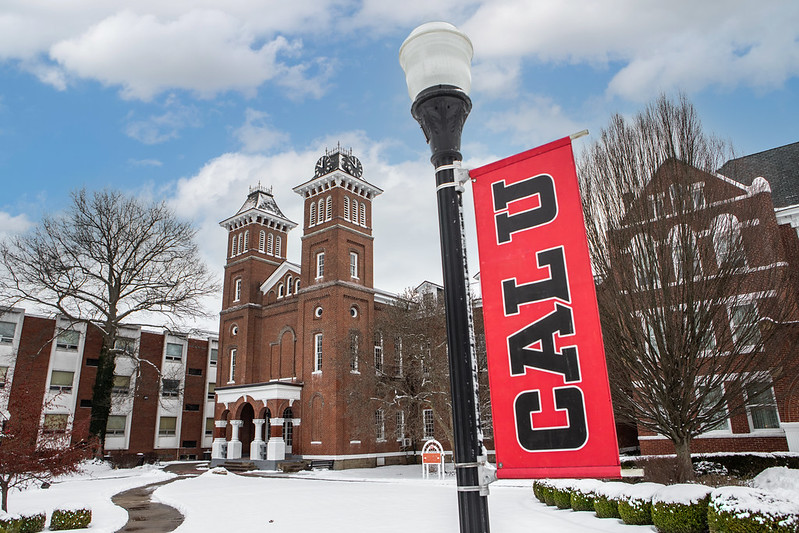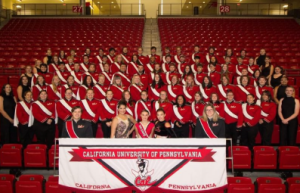This PennWest merger can be found similar to a university merge in Georgia
February 4, 2022
Consolidation has become one of the eleventh-hour endurance moves left for small institutions in order to survive the changing demands of higher education.
The PASSHE merger was first announced in early July of 2020 as a means to combine and save on administrative and student costs.
“This system is at a tipping point,” said Chancellor Dan Greenstein “It is no longer sustainable in the current model. Tweaks to that model will not serve our students. It will not serve their communities, and it will not serve the state.”
As the merger was announced to the public through a state press release, the governing board of Pennsylvania’s Higher Education System voted to consolidate not only three western universities but a northeast merger as well.
The consolidation of these campuses and university services are aimed to cut spending costs and therefore hold down tuition rates for students according to Pennsylvania’s State System of Higher Education Chancellor Dan Greenstein.
Western universities, Clarion, CalU, and Edinboro will make the merger come summer of 2022 while northeast universities will follow shortly after.
With Pennsylvania state enrollment declining and a strain on financial stability for many of the state-funded universities, the pressure to combine resources and education efforts has been felt once before by the Georgia Board of Regents.
The merger of two Georgia universities integrated in 2016, Georgia Perimeter College and Georgia State University decided to combine resources and the decision has improved retention and graduation rates, increased enrollment, and expanded many student service programs.
In 2018, Insider Higher Ed article, Georgia State’s senior vice president for student success, Timothy Renick said that the school’s retention rates had rapid progression in a relatively short period. Year to year retention rates increased from 58% before the merger in 2014, to 70% as of 2018 nearly three years after the merger was completed.
Georgia State officials have credited the newly introduced predictive analytics to increase academic achievement at the former Georgia Perimeter; this technology was brought to GSU with the integration of the two schools.
The consolidated university has used predictive analytics to review hundreds of risk factors for students that would then alert advisers when students receive poor grades or are on the verge of dropping out. Cal U’s enrollment went down by 470 students as opposed to the 2018-2019 school year. This is a reflection of the 6.4% drop in enrollment reported for this year. The retention rates are around 72% of the freshman class returning for the second year fall semester.
Vice president for communications and marketing at CalU, Christine Kindl said, “We want to maintain our standards even in the face of a challenging enrollment environment.”
According to Cal U’s interim president, Dale-Elizabeth Pehrsson, the goals of the merger are to minimize the impact this consolidation would have on each university and be able to sustain the student tuition price without increasing cost-cutting to directly impact student fees and invest in other student services like tutoring and advisors.
The chancellor of the University System of Georgia, Henry Huckaby, went on record in a press release to The Chronicle of Higher Education shortly after the merger and said that all money derived from newly found efficiencies from the combined institution had been placed back into the campuses and redirected to academic programs.
Larry Sebek, CalU’s interim vice president for Student Affairs, said that the Student Association Inc. fees were of, concern and that the staff was focusing on the varying fees between campuses and how that would affect university clubs and organizations.
“But then on top of that, there’s going to be other fees like your parking fees, library fees, and academic support fees. Each of those campuses is very, very different. So, as we get into integration, we’re going to look for a way where we can combine all of those into one,” Sebek said.
Current students pay $1,183 in total fees to attend the university. The fees paid by a 12-credit Cal U student includes a technology fee of $239, a university service fee of $85, Student Association Inc. fee of $300, a students union building fee of $148, a student center operations and maintenance fee of $176, an academic support fee that varies upon the state residency, a recreation and fitness center fee of $158 plus an additional $27 for operations and maintenance, a lab fee which varies depending on major, and a transportation fee of $50.
Students that enroll in the current global online program at Cal U do not pay all of the same fees but currently have their own list which depends on the program of study they have chosen.
Pehrsson assured students in a public town hall, that operating strategically and sustainably would help solidify the success of PennWest University with a better opportunity for many students without a raised cost in their education.
“There will be things that we will not have to cut because we are saving costs on other things that we don’t have to replicate,” Pehrsson said.
According to the GSU merger webpage, by no longer needing two presidents, provosts, or multiple chairs, Georgia State was able to take a total of $6.58 million through consolidation and use it towards student services. This was achieved with only a 28 employee loss, some due to retirement but with a higher increase of 80 new advisors and other student-support personnel.
As listed on CalU’s new university integration page, the university continues its promise to students that the campuses will save money by working together and re-invest all savings in ways that benefit the students such as implementing new courses, new equipment, expanded student services, and holding down or possibly lowering costs.
There has been concern that the PASSHE employees may lose more jobs than initially expected as a result of the integration. According to David Pidgeon, a spokesman for PASSHE, there has not been a defined number of layoffs for CalU or either of the other universities.
Pehrsson said there have non-replacement of certain positions,” she said.
All of these possibilities are the outcome that both the PASSHE and universities are aiming for by working together to consolidate in a timely and effective manner.
“With the PASSHE redesign, we’ve been looking at how we can combine things like bargaining for different services. We’re trying to get that affordability piece to make sure that students are not paying more than they need to for education, and they’re able to graduate with less debt,” said Pehrsson in her last online town hall.







